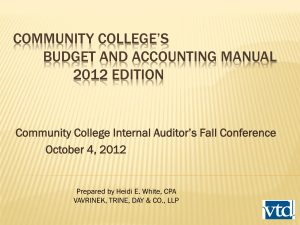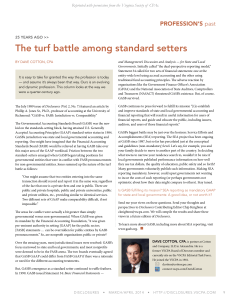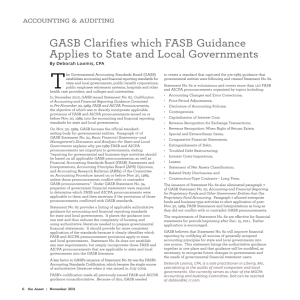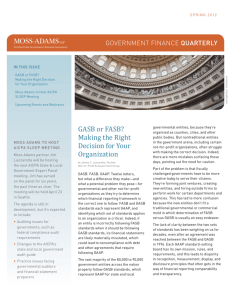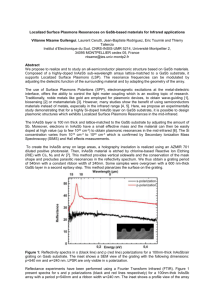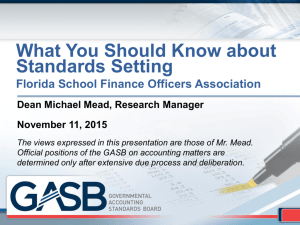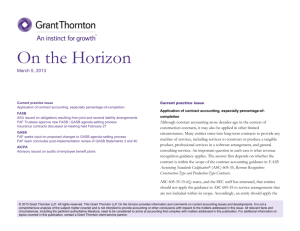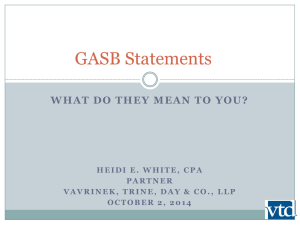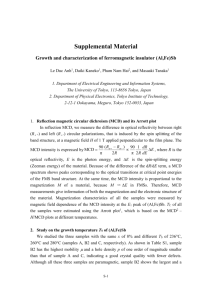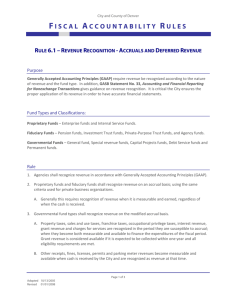FASB vs. GASB
advertisement
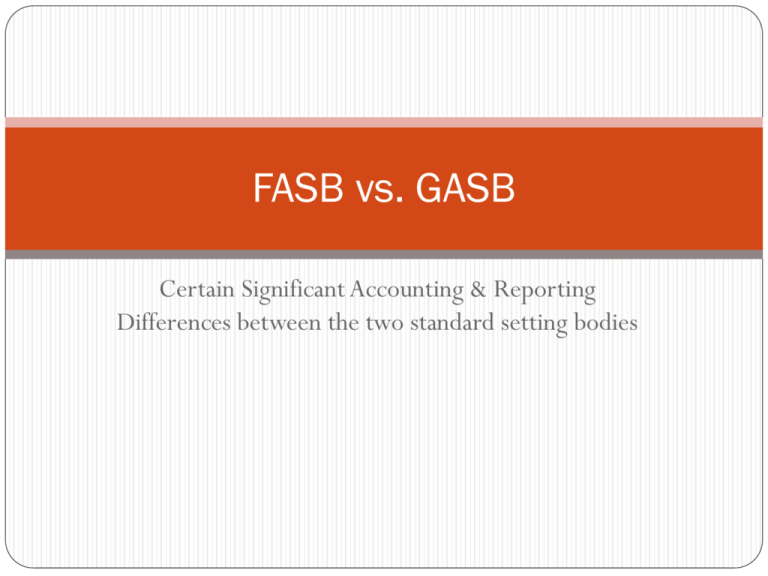
FASB vs. GASB Certain Significant Accounting & Reporting Differences between the two standard setting bodies Format of the Financial Report MD&A is RSI for GASB reporting entities Statement of net position and balance sheet for fund statements under GASB vs. Statement of financial position for FASB Governmental funds on modified accrual Under GASB; Assets do not include deferred outflows of resources & liabilities do not include deferred inflows of resources Under GASB; Net position split between a) net investment in capital assets, b) restricted and c) unrestricted CSU requires supplemental information on GASB basis Total equity can be different for FASB entity with GASB supplementary information due to differences in accounting Net position/Fund balance/Net assets Net position & fund balance (GASB) vs. Net assets (NFP) Net position Net investment in capital assets Restricted for stated activities Unrestricted Fund Balance (GASB 54) Defines the types of governmental funds (general fund, special revenue funds, capital projects funds, debt service funds) Fund balance is either nonspendable, restricted, committed, assigned and unassigned NFP … Unrestricted, temporarily restricted (TR) and permanently restricted (PR) TR and PR only from donor restriction, not internal Unrestricted can be board designated or undesignated Cash & Investments FASB Disclose levels (I, II and III) GASB (GASB Statements 31 & 40) Disclose deposit and investment policies Investment disclosures by investment type Credit risk (credit quality) Custodial credit risk (collateral and insurance) Concentration of credit risk (maturity) Interest rate risk (using one of 5 methods) Fixed Assets / Capital Assets Accounting Modified approach is an option in GASB Capital asset purchases expensed in governmental funds Disclosure detail Roll-forward by asset classification for cost and depreciation under GASB Capitalized interest Only for proprietary funds and business-type activities under GASB Impairment Threshold based on GASB 42 (i.e.; when service utility has declined significantly and unexpectantly) Long-term Debt Roll-forward of debt in note disclosure Maturities include expected interest expense based on stated/current interest rates, in a separate column Defeasance of debt through advance refundings. Cost of issuance is written-off Disclose existence of economic gain or loss in year of funding Deferred gain or loss reported in deferred outflows or inflows of resources Premium or discount reported as part of Long-term Debt Revenue Recognition for non-exchange transactions GASB Statement No. 33 Derived tax revenues (income taxes, sales tax) Revenue when the underlying exchange transaction occurs (and resources are available under modified accrual) Imposed nonexchange (property taxes and fines) Revenue in the period when the use of resources is required or first permitted to be used Government-mandated nonexchange (federal programs that the state or local governments have to do) Revenue when all eligibility requirements are met (and resources are available under modified accrual) Voluntary nonexchange (grants and private donations) Revenue when all eligibility requirements are met (and resources are available under modified accrual) FASB Statements 116 and 117 Pension & OPEB FASB Record as a liability the actuarial present value (PV) of future payments under FASB Statements 87, 106, 132, 158 GASB (GASB 27 and 45) - Record asset or liability depending on if the contributions to the plans are in excess or deficient as compared to the calculated cumulative Annual Required Contribution (ARC). About to change for pensions due to GASBs 68 and 71 Derivative Instruments FASB FASB statements 119, 133, 137, 138, 149, 155 & 161 Fair Value or cash flow hedge Cash flow hedge through Other Comprehensive Income GASB In accordance with GASB Statement No.s 53 and 64 Effective hedge not recognized through operating statements until settled (deferred outflows if the hedge is a liability, and deferred inflows if the hedge is an asset) Statement 64 clarifies whether a hedging relationship continues after the replacement of a SWAP counterparty. GASB 62; codification of FASBs before 11/30/89 Which capital assets qualify for capital interest and how capitalized interest is calculated Revenue recognition for exchange transactions Determining what are special and extraordinary items Determining related parties and required disclosures Prior period adjustments and changes in accounting principles and estimates Accounting and reporting for contingencies (old FASB 5 reference), including contingent gains Extinguishment of debt, except through current or advance refundings Foreign currency transactions Accounting for inventories Investment in common stock not held in an investment pool, DB Plan or 457 deferred comp plan Lease classification (S/L calculation could be different if stated increases reflect CPI increases) including sales lease-backs Costs associated with real estate projects Indirect costs that do not clearly relate to projects under development or construction. Including G&A, should be expensed as incurred Purchases of a loan or group of loans

